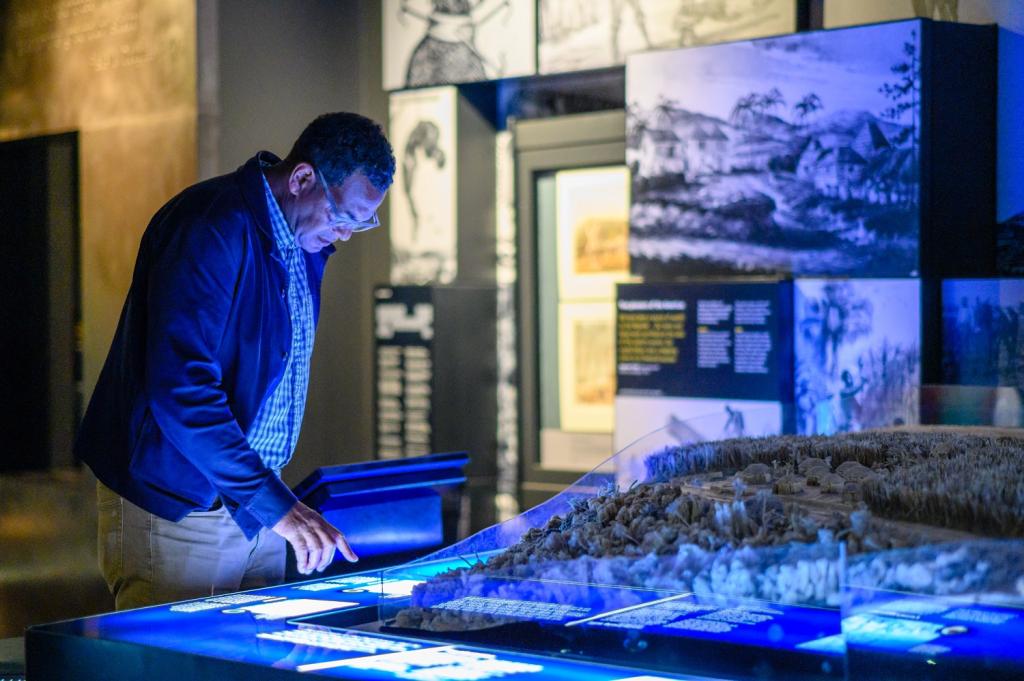Last chance to visit International Slavery Museum and Maritime Museum before temporary closure
Visitors have just six weeks left to visit two of Liverpool’s most prestigious museums.

Visitors have just six weeks left to visit two of Liverpool’s most prestigious museums.
Both International Slavery Museum and Maritime Museum will be closing their doors for a period of essential repair and maintenance works from 5 January, ahead of a major redevelopment project, subject to funding.
Both museums are due to reopen in 2028.
In 1986 the Merseyside Maritime Museum (as it was then known) opened in the Royal Albert Dock in a warehouse formerly used to store tea, silk, sugar and spirits. The first public building to open at the dock, it began the renaissance of Liverpool's bustling waterfront that continues to attract visitors from across the globe.
For almost 40 years the Maritime Museum has told the story of one of the world's greatest ports and the people who lived in, worked on, or passed through it. The museum's collections reflect the international importance of Liverpool as a maritime gateway to the world and for four decades the museum has engaged millions of visitors with this history through its fascinating exhibitions, special events and rich learning programme.
In 1994 the Merseyside Maritime Museum launched a new gallery in its basement – The Transatlantic Slavery gallery. This marked a major moment for Liverpool in addressing its past, but it also galvanised members of Liverpool’s Black community, as well as the staff and board at the museum, to understand the work had only just begun.
In 2007 the International Slavery Museum opened on the third floor of the Maritime Museum. For almost 20 years the museum has explored the impact and legacies of transatlantic slavery. It has welcomed guests and experts from across the world and created and hosted meaningful dialogue around many contemporary issues.
Laura Pye, Director, National Museums Liverpool said:
Both the Maritime Museum and International Slavery Museum have welcomed millions of visitors over the years. Their collections and stories have an international reputation.
However, for both museums, redevelopment is now essential to ensure they survive for many more generations to come. From creating a new sense of identity and prominence for the International Slavery Museum on Liverpool’s historic waterfront, to ensuring our collections are properly cared for through improved environmental controls, this is important work which will create world class spaces, worthy of the collections they hold and the location they’re in.
We know Liverpool’s waterfront will feel the loss of the museums while they’re closed, but this will be temporary, and we hope as many people as possible will seize the chance over the next few weeks to visit us and share their memories of both museums.
While closed the museums will embrace new opportunities to share their collections and stories. Learning teams from both International Slavery Museum and Maritime Museum are already offering school sessions off site. From community spaces to school classrooms or other National Museums Liverpool venues, school groups will continue to engage with the collection.
The museums’ Archives Centre will reopen in a temporary space during the closure period and special pop-up displays off site are being developed.
Fresh digital content from online collections to articles, podcasts and videos, will also continue to be produced and available on the National Museums Liverpool website.
This project is being supported by The National Lottery Heritage Fund with thanks to National Lottery Players.
The redevelopment of International Slavery Museum and Maritime Museum is part of the wider Waterfront Transformation Project which aims to link storytelling, heritage, community and hospitality to create a rich visitor experience and be a catalyst for social and environmental improvements in the area.
